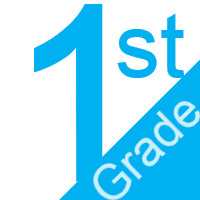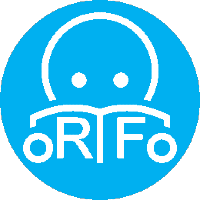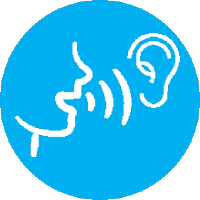BPS District English Standards Book
K-12 Grade Levels
Grade 01

1st Grade English
"I can ... statements"
![]()
![]()
![]()
![]()
![]()
![]()
 In 1st grade, your child will become a more independent reader and writer. Your child will continue to learn and practice rules for recognizing the sounds that make up words and will be able to sound out more complex words. Such foundational
skills are necessary and important components of developing proficient readers with the capacity to comprehend a wide range of materials. Students will learn to think about what they read and talk about the main ideas of simple stories. As they
write and speak, 1st graders will learn to use language appropriately; this includes using complete sentences and spelling words with increasing accuracy.
In 1st grade, your child will become a more independent reader and writer. Your child will continue to learn and practice rules for recognizing the sounds that make up words and will be able to sound out more complex words. Such foundational
skills are necessary and important components of developing proficient readers with the capacity to comprehend a wide range of materials. Students will learn to think about what they read and talk about the main ideas of simple stories. As they
write and speak, 1st graders will learn to use language appropriately; this includes using complete sentences and spelling words with increasing accuracy.
Prioritized Standards Identifiers are highlighted a sky-blue.
ELA-01.RL  Reading Literature Strand
Reading Literature Strand
- ELA-01.RL.01 Ask and answer questions about key/supporting details in a text before, during, and after reading.
- ELA-01.RL.02 Retell stories, including key/supporting details, and demonstrate understanding of their central or main idea.
- ELA-01.RL.03 Describe characters, settings, and major events in a story, using key/supporting details.
- ELA-01.RL.04 Identify words and phrases in stories or poems that suggest feelings or appeal to the senses.
- ELA-01.RL.05 Explain the differences between fiction and nonfiction text using a wide range of text types.
- ELA-01.RL.06 Identify who is telling the story at various points in a text.
- ELA-01.RL.07 Use illustrations and details in a story to describe its characters, setting, or events.
- ELA-01.RL.08 (Not applicable to literature)
- ELA-01.RL.09 Compare and contrast the adventures and experiences of characters in stories.
- ELA-01.RL.10 Read prose and poetry on grade level 1 proficiently and independently.
ELA-01.RI  Reading Information Strand
Reading Information Strand
- ELA-01.RI.01 Ask and answer questions about key/supporting details in a text.
- ELA-01.RI.02 Identify the main topic and retell key/supporting details of a text.
- ELA-01.RI.03 Describe the connection between two individuals, events, ideas, or pieces of information in a text.
- ELA-01.RI.04 Ask and answer questions to help determine or clarify the meaning of words and phrases in a text.
- ELA-01.RI.05 Know and use various text features to locate key facts or information in a text.
- ELA-01.RI.06 Distinguish between information provided by photographs or other illustrations and information provided by the words in a text.
- ELA-01.RI.07 Use the photographs or illustrations and details in a text to describe its key ideas.
- ELA-01.RI.08 Identify the reasons an author gives to support points in a text.
- ELA-01.RI.09 Identify basic similarities in and differences between two texts on the same topic.
- ELA-01.RI.10 Proficiently read informational texts on grade level.
ELA-01.RF  Reading Foundational Skills Strand
Reading Foundational Skills Strand
- ELA-01.RF.01 Demonstrate understanding of the organization and basic features of print.
- ELA-01.RF.02 Demonstrate understanding of spoken words, syllables, and sounds (phonemes).
- ELA-01.RF.03 Know and apply grade-level phonics and word analysis skills in decoding words.
- ELA-01.RF.04 Read with sufficient accuracy and fluency to support comprehension.
ELA-01.W  Writing Strand
Writing Strand
- ELA-01.W.01 Write opinion pieces in which they introduce the topic or name the book they are writing about, state an opinion, supply a reason for the opinion, and provide some sense of closure.
- ELA-01.W.02 Write informative/explanatory texts in which they name a topic, supply some facts about the topic, and provide some sense of closure.
- ELA-01.W.03 Write narratives in which they recount two or more appropriately sequenced events, include some details regarding what happened, use temporal words to signal event order, and provide some sense of closure.
- ELA-01.W.04 (Begins in grade 3)
- ELA-01.W.05 With guidance and support from adults, focus on a topic, respond to questions and suggestions from peers, and add details to strengthen writing as needed.
- ELA-01.W.06 With guidance and support from adults, use a variety of digital tools to produce and publish writing, including collaboration with peers.
- ELA-01.W.07 Participate in shared research and writing projects.
- ELA-01.W.08 With guidance and support from adults, recall information from experiences or gather information from provided sources to answer a question.
- ELA-01.W.09 (Begins in grade 4)
ELA-01.L  Language Strand
Language Strand
- ELA-01.L.01 Within the context of authentic English writing and speaking…
- ELA-01.L.02 Demonstrate command of the conventions of standard English capitalization, punctuation, and spelling when writing.
- ELA-01.L.03 (Begins in grade 2)
- ELA-01.L.04 With guidance and support from adults, determine or clarify the meaning of unknown and multiple-meaning words and phrases based on kindergarten reading and content.
- ELA-01.L.05 With guidance and support from adults, explore word relationships and nuances in word meanings.
- ELA-01.L.06 Use words and phrases acquired through conversations, reading, being read to, and responding to texts.
ELA-01.SL  Speaking and Listening Strand
Speaking and Listening Strand
- ELA-01.SL.01 Participate in collaborative conversations with diverse partners about kindergarten topics and texts with peers and adults in small and larger groups. a. Follow agreed upon rules for discussions (e.g., listening to others and taking turns speaking about the topics and texts under discussion). b. Continue a conversation through multiple exchanges.
- ELA-01.SL.02 Confirm understanding of a text read aloud or information presented orally or through other media by asking and answering questions about key/supporting details and requesting clarification if something is not understood.
- ELA-01.SL.03 Ask and answer questions in order to seek help, get information, or clarify something that is not understood.
- ELA-01.SL.04 Describe familiar people, places, things, and events and, with prompting and support, provide additional detail.
- ELA-01.SL.05 Add drawings or other visual displays to descriptions as desired to provide additional detail.
- ELA-01.SL.06 Speak audibly and express thoughts, feelings, and ideas clearly.
A Sample of What Your Child Will Be Working on in 1st Grade
- Using phonics (matching letters and sounds) and word analysis skills to figure out unfamiliar words when reading and writing
- Describing characters, settings, and major events in a story, using key details
- Getting facts and information from different writings
- Writing about a topic, supplying some facts, and providing some sense of opening and closing
- Participating in shared research and writing projects (e.g., exploring a number of “how-to” books and using them to write a sequence of instructions)
- Taking part in conversations about topics and texts being studied by responding to the comments of others and asking questions to clear up any confusion
- Describing people, places, things, and events with relevant details, expressing ideas and feelings clearly and with complete sentences
- Producing and expanding complete simple and compound statements, questions, commands, and exclamations
- Identifying the correct meaning for a word with multiple meanings, based on the sentence or paragraph in which the word is used (e.g., deciding whether the word bat means a flying mammal or a club used in baseball)
- Learning to think about finer distinctions in the meanings of near-synonyms (e.g., marching, prancing, strutting, strolling, walking)





